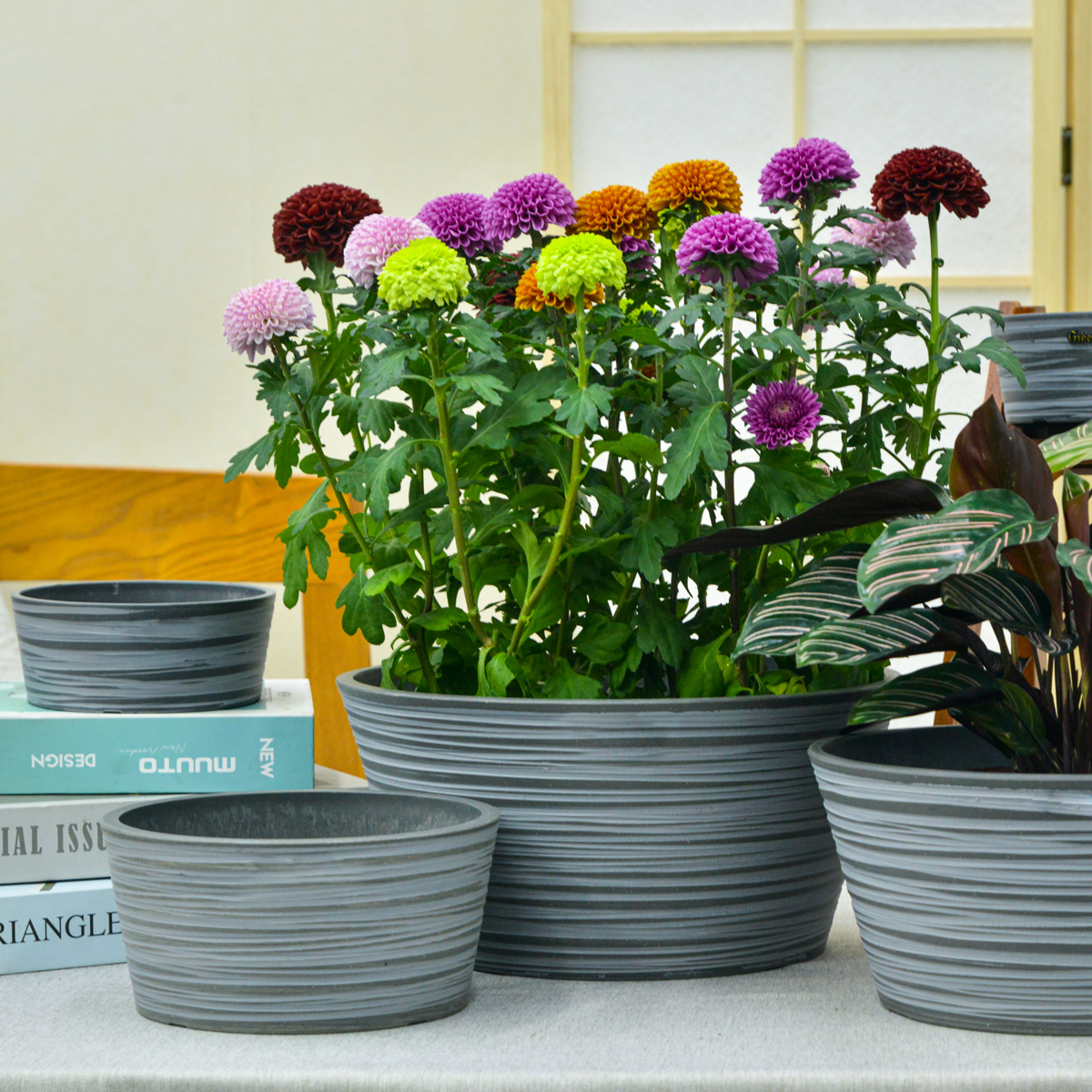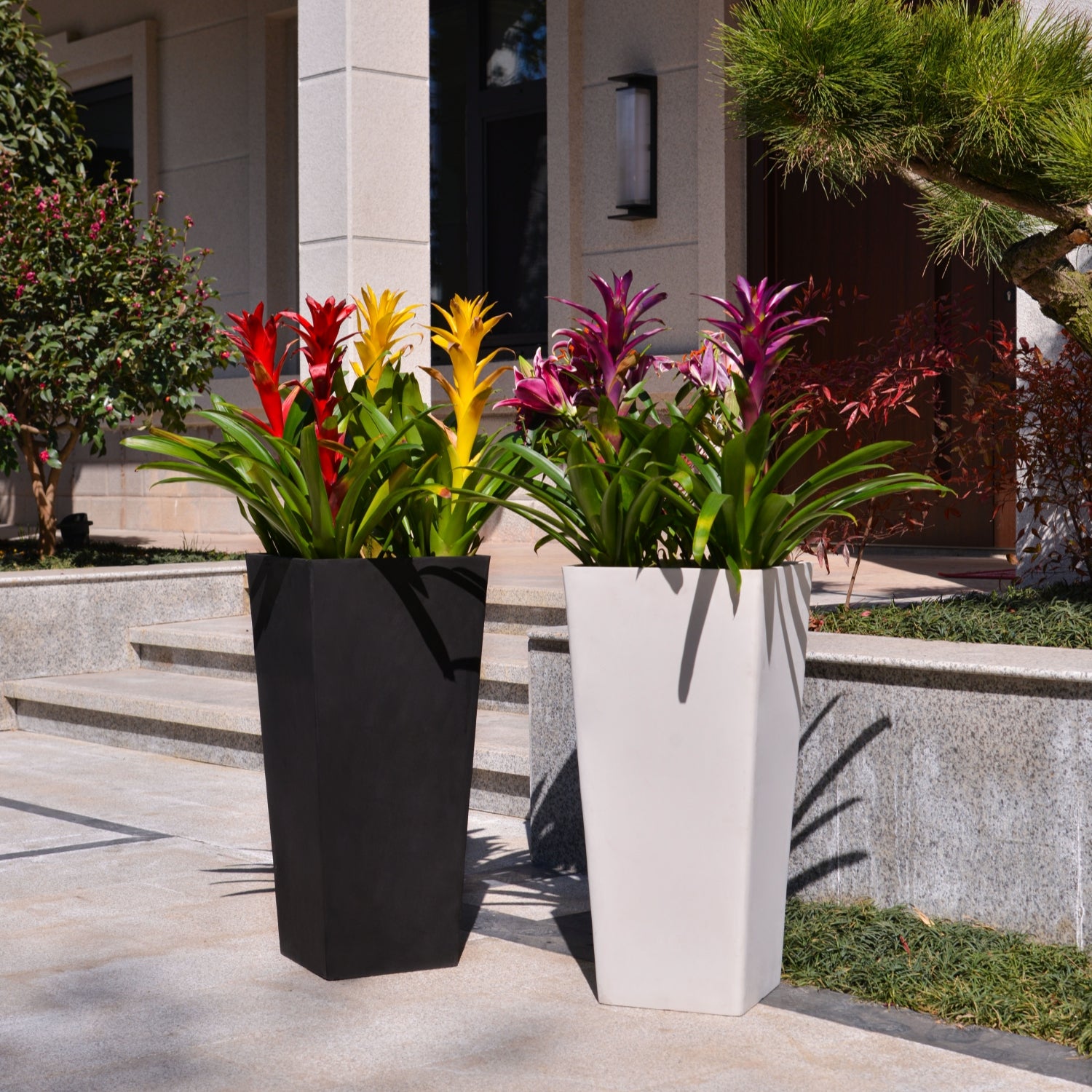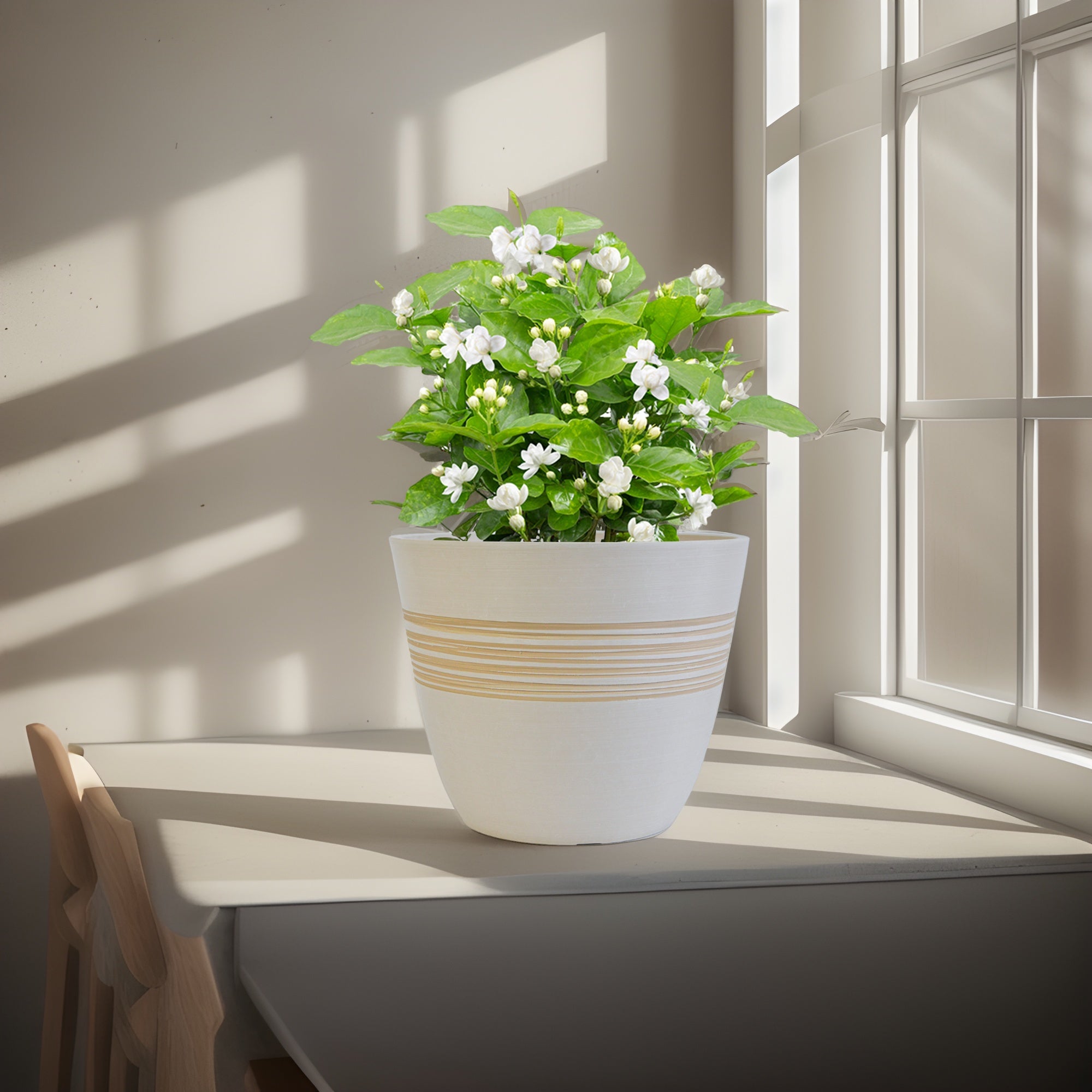Cherries in Pots: The Complete Guide to Growing Sweet & Tart Cherries Outdoors in Containers
Want to harvest your own juicy, sun-ripened cherries right from your patio, balcony, or garden? Growing cherry trees in containers is a surprisingly feasible and rewarding way to cultivate these delicious fruits, even in urban environments or limited spaces. Celebrated for their beautiful spring blossoms, attractive foliage, and of course, their sweet or tart, flavorful cherries, cherry trees can be adapted to container gardening, bringing a touch of orchard freshness to your outdoor living spaces. This comprehensive guide will provide you with everything you need to know to grow cherry trees successfully in outdoor pots, from selecting the best varieties and containers to mastering essential care techniques for a delightful harvest of homegrown cherries.
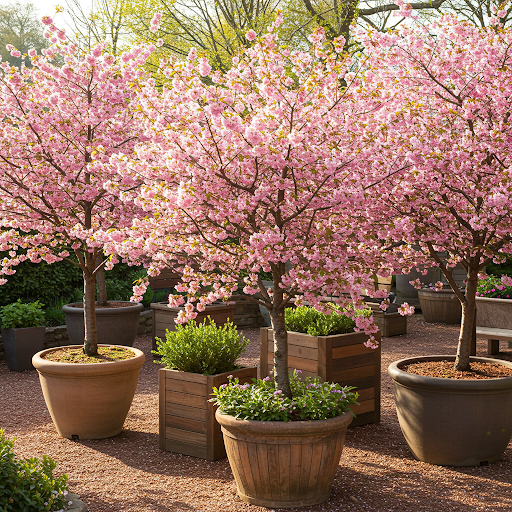
cherry
What are Cherries?
Cherries belong to the genus Prunus, which also includes plums, peaches, and almonds, and are stone fruits (drupes) from trees of the Rosaceae family. There are two main types of cherries commonly grown for fruit: sweet cherries(Prunus avium) and tart or sour cherries (Prunus cerasus). Native to various regions of the Northern Hemisphere, cherries are popular fruit trees grown for their delicious, juicy fruits, ornamental spring blossoms, and attractive foliage. Cherry trees are characterized by their upright, branching habit, oval-shaped, serrated leaves, showy white or pink spring flowers, and red, yellow, or dark red fruits depending on the variety. They exhibit a deciduous, tree-like growth habit, typically reaching varying sizes depending on the rootstock and pruning, but can be maintained at manageable sizes in containers. They are known for their sweet or tart, flavorful fruits, ornamental value, and relatively easy care once established, making them a prized addition to home gardens and containers, especially for fresh eating, baking, and preserves.
Are Cherries Good for Outdoor Pots?
Yes, certain types of cherry trees are well-suited for outdoor pots and container gardening, especially dwarf and semi-dwarf varieties grafted onto dwarfing rootstock. Growing cherry trees in containers allows even gardeners with limited space to enjoy fresh cherries. Container growing offers several advantages:
- Space Saving: Ideal for patios, balconies, and small gardens where space for full-sized trees is limited.
- Portability: Potted cherry trees can be moved to optimal locations for sunlight, shelter from harsh weather, or to protect blossoms from late frosts.
- Soil Control: You can provide the ideal well-draining, fertile soil mix that cherries prefer, regardless of your native garden soil.
- Pest and Disease Management: Container growing can help reduce some soilborne pest and disease issues.
- Ornamental Value: Cherry trees in pots add beauty with their spring blossoms, attractive foliage, and colorful fruit, enhancing patios and outdoor spaces.
However, there are considerations:
- Variety Selection is Crucial: Not all cherry varieties are suitable for containers. Dwarf and semi-dwarf varieties on dwarfing rootstock are essential for manageable size and fruit production in pots.
- Pot Size: Cherries need large, sturdy pots to accommodate their root systems and provide stability for the tree.
- Watering and Fertilizing: Potted cherries require more consistent watering and fertilization than trees grown in the ground.
- Lifespan: Container-grown fruit trees may have a slightly shorter lifespan than those in the ground, and may require more frequent repotting or root pruning.
- Chill Hours: Ensure the chosen variety’s chill hour requirement is met in your climate for proper fruit set. Singapore’s climate might not be suitable for all cherry varieties due to lack of chill hours. You will need to select low-chill varieties if you are in a warm climate.
Ideal Growing Conditions for Cherries in Pots:
Types of Cherries for Pots: The most crucial factor for growing cherries in pots is selecting the right variety and rootstock:
- Dwarf Cherry Varieties: Look for varieties specifically labeled “dwarf” or “patio cherry.” These are naturally smaller and more compact, making them best suited for containers. Examples include ‘ Compact Stella’, ‘ Garden Bing’, ‘ Crimson Pointe’ (ornamental with some fruit), and ‘ Lapins’ (self-fertile, semi-dwarf, can be managed in a large pot).
- Semi-Dwarf Cherry Varieties on Dwarfing Rootstock: Choose semi-dwarf varieties grafted onto dwarfing rootstocks like ‘Gisela 5’, ‘Gisela 6’, ‘Krymsk 5’, or ‘Mazzard’ dwarfing rootstock. Rootstock information is usually provided when purchasing trees from nurseries. Dwarfing rootstock significantly controls the tree’s mature size, making semi-dwarf varieties manageable in large containers. Popular semi-dwarf varieties include ‘Stella’ (self-fertile), ‘Bing’ (needs pollinizer), ‘Rainier’ (needs pollinizer), ‘Lapins’ (self-fertile). Ensure the rootstock is specified as dwarfing.
- Sweet Cherry vs. Tart Cherry: Both sweet and tart cherries can be grown in pots, but tart cherries are often considered slightly more adaptable to container growing and may be more self-fertile.
- Sweet Cherries: Generally preferred for fresh eating, require pollination (unless self-fertile varieties like ‘Stella’ or ‘Lapins’ are chosen), and need warmer, drier climates during fruit ripening to prevent cracking.
- Tart Cherries: Excellent for baking, pies, jams, and preserves, often more cold-hardy and self-fertile (like ‘Montmorency’ and ‘ উত্তরstar’), and may be slightly more tolerant of wetter conditions during ripening.
- Self-Fertile vs. Pollination Required:
- Self-Fertile: These varieties can produce fruit with their own pollen and do not need another cherry tree for pollination. ‘Stella’, ‘Lapins’, ‘ উত্তরstar’, ‘ Juliet’, ‘ Romeo’, ‘ Crimson Pointe’ are self-fertile or partially self-fertile. Self-fertile varieties are ideal for single container plantings.
- Pollination Required: Most sweet cherry varieties require cross-pollination from a different sweet cherry variety to set fruit. If choosing a non-self-fertile variety, you will need to plant at least two different compatible sweet cherry varieties to ensure fruit production. Tart cherries are often self-fertile, but some may benefit from cross-pollination. Check variety descriptions carefully.
Chill Hours: Cherries require a certain number of “chill hours” (hours below 45°F or 7°C during winter) to properly break dormancy and set fruit. Chill hour requirements vary by variety, ranging from 300-1000+ hours. Crucially, Singapore’s climate may not provide sufficient chill hours for many cherry varieties. If you are in a warm climate like Singapore, you must select low-chill cherry varieties that require minimal chill hours (e.g., 200-400 hours or less). Low-chill sweet cherry varieties are less common, but some may be available. Tart cherries generally have higher chill hour needs. Research low-chill fruit tree varieties suitable for Singapore’s climate and inquire with local nurseries about cherry varieties that may be successful. It is possible that cherry cultivation in Singapore’s climate may be challenging or not feasible for many varieties due to insufficient chill hours. Consider other low-chill fruit options if cherries are not well-suited to your climate.
Light: Cherries need full sun. They require at least 6-8 hours of direct sunlight per day to produce abundant fruit and ripen properly. Choose a sunny location for your cherry containers, such as a south-facing patio, balcony, or garden roof. In partial shade, cherry trees will produce significantly less fruit, and the fruit may be smaller and less sweet. Full sun is essential for optimal fruit production, sweetness, and tree health.
Soil: Cherries need well-draining soil that is fertile and slightly acidic to neutral. Use a high-quality potting mixspecifically formulated for fruit trees or a mix of potting mix, compost, and topsoil (avoid heavy garden soil). Amend potting mix with compost, aged manure, or other organic matter to improve fertility and drainage. Cherries prefer slightly acidic to neutral soil with a pH between 6.0 and 7.0. Excellent drainage is crucial to prevent root rot, which cherries are susceptible to in soggy conditions. Ensure the potting mix is well-draining and avoid waterlogged soil.
Watering: Cherry trees need consistent moisture, especially during fruit development and in hot weather. Water deeply when the top few inches of soil feel slightly dry. Water thoroughly until water drains out of the drainage holes. Keep the soil consistently moist, but not soggy. Avoid letting the soil dry out completely, especially during flowering and fruiting periods, as drought stress can lead to fruit drop and reduced fruit size. However, also avoid overwatering and constantly soggy soil, which can lead to root rot. Cherries prefer a “moist but well-drained” soil environment. Watering frequency will depend on weather conditions, light levels, pot size, and tree size. During hot summer months, you may need to water daily or even twice a day for smaller pots in full sun. Check soil moisture regularly and adjust watering accordingly. Water at the base of the tree, avoiding wetting foliage excessively to minimize fungal diseases.
Temperature: Cherry trees are cold-hardy deciduous trees that require a period of winter dormancy. However, they also need moderate temperatures during the growing season for optimal fruit production. They perform best in temperatures between 60°F to 85°F (15°C to 29°C) during spring and summer. They are cold-hardy to USDA zones 5-8 or 4-9, depending on the variety and rootstock. They need sufficient chill hours in winter (unless low-chill varieties are chosen – which is crucial for Singapore’s climate, but low-chill sweet cherries are rare). Hot temperatures above 90°F (32°C) during fruit ripening can sometimes cause fruit sunburn or softening. Potted cherry trees can be moved to slightly sheltered locations during extreme heat or late frosts. Protect blossoms from late spring frosts to ensure fruit set. In colder zones, potted cherries need winter protection for the roots (see “Winter Care” below).
Fertilizer: Cherry trees benefit from regular fertilization, especially when grown in pots, to provide the nutrients needed for growth, flowering, and fruit production. Fertilize in early spring as new growth emerges, and again after fruit set to support fruit development. Use a balanced fertilizer (e.g., 10-10-10 or 12-12-12) or a fertilizer specifically formulated for fruit trees. Follow product label instructions for application rates, and avoid over-fertilizing, which can harm the tree. For containers, slow-release granular fertilizers incorporated into the potting mix in spring, supplemented with liquid feeding during the growing season, can be effective. Avoid high-nitrogen fertilizers, especially after fruit set, as they can promote leafy growth at the expense of fruit.
Choosing the Right Pots for Cherry Trees:
Suitable Pot Types: Use large, sturdy pots made of durable materials that can support the weight of a mature cherry tree and withstand outdoor conditions. Suitable pot types include:
- Large Plastic Pots: Lightweight, durable, inexpensive, and available in very large sizes. Practical and cost-effective choice for large cherry trees in containers. Choose heavy-duty, UV-resistant plastic pots with drainage holes. Dark colors can absorb heat in sunny locations.
- Resin Pots: Lightweight, durable, available in various styles mimicking terracotta or ceramic, and often more decorative than plastic. Good alternative to heavy ceramic or terracotta, and offer good durability for large pots.
- Heavy-Duty Grow Bags: Fabric grow bags in very large sizes (20-30+ gallons) can be used for cherry trees. They offer excellent drainage and aeration, are lightweight, and relatively inexpensive. However, they may be less aesthetically pleasing than traditional pots and may dry out more quickly.
- Large Terracotta or Ceramic Pots: Aesthetically pleasing and classic, but can be very heavy, expensive, and may be prone to cracking in freezing temperatures (terracotta). Glazed ceramic pots are less porous and retain moisture better than terracotta. Ensure excellent drainage and choose very large, sturdy pots if using terracotta or ceramic. Weight can be a significant factor when moving large terracotta or ceramic pots.
Drainage: Excellent drainage is absolutely critical for cherry trees in pots to prevent root rot. Ensure your chosen pot has multiple drainage holes at the bottom. Avoid pots without adequate drainage. Adding a generous layer of gravel or pot shards at the base of the pot is highly recommended to improve drainage. Elevating pots slightly on pot feet or bricks can further improve drainage and air circulation.
Pot Size: Start with a pot that is appropriately sized for the young tree you are planting, and be prepared to repot or root prune as the tree grows over the years. For dwarf and semi-dwarf cherry trees, start with at least a 15-20 gallon pot initially, and eventually move to a 25-30+ gallon pot as the tree matures. Larger pots are generally better to provide ample root space, stability, and moisture retention.
- Initial Pot Size (Young Dwarf/Semi-Dwarf Tree): 15-20 gallons (approximately 18-24 inches in diameter and depth).
- Mature Pot Size (Dwarf/Semi-Dwarf Tree): 25-30+ gallons (approximately 24-30+ inches in diameter and depth).
- Very Dwarf Patio Cherries: May be manageable in slightly smaller pots (e.g., 10-15 gallons), but larger is still generally better.
Color and Style: Choose pot colors and styles that complement your cherry tree and your outdoor décor. Neutral colors like terracotta, gray, brown, or dark green often work well, allowing the tree’s blossoms and fruit to be the focal point. Simple, classic pot styles are generally best for fruit trees, emphasizing their natural form and beauty. Consider the overall style of your patio or garden and choose pots that harmonize with the surroundings. Ensure the pot is sturdy and stable enough to support the mature tree, especially in windy locations.
Essential Care Tips for Thriving Cherry Trees in Outdoor Pots:
- Watering: “Water Deeply When Top Inches of Soil are Slightly Dry, Ensure Good Drainage”. Water deeply and regularly, especially during dry periods and fruit development. Water when the top few inches of soil feel slightly dry. Ensure excellent drainage and avoid soggy soil. Consistent moisture is important, but overwatering is detrimental.
- Sunlight: Provide Full Sun (6-8+ Hours Daily). Place cherry containers in a location that receives full sun for optimal growth, flowering, and fruit production.
- Fertilizing: Fertilize in Early Spring and After Fruit Set. Use Balanced Fruit Tree Fertilizer. Fertilize in early spring as new growth begins and again after fruit set. Use a balanced fertilizer formulated for fruit trees. Follow label instructions and avoid over-fertilizing.
- Pruning: Annual Pruning in Late Winter/Early Spring. Prune annually in late winter or early spring to maintain tree shape, remove dead or crossing branches, improve air circulation, and encourage fruit production. Prune to maintain a manageable size for container growing. Research proper cherry tree pruning techniques.
- Pollination (If Necessary): If growing non-self-fertile sweet cherry varieties, ensure you have at least two compatible varieties planted nearby for cross-pollination. Bees and other pollinators are essential for fruit set.
- Thinning Fruit (Optional, for Larger Fruit): If fruit set is very heavy, you can thin out some of the developing fruit to encourage larger fruit size and prevent branches from breaking under the weight of the fruit. Thinning is usually done when fruits are small, about marble-sized.
- Pest and Disease Control: Monitor for common cherry tree pests and diseases, such as aphids, spider mites, cherry fruit flies, brown rot, and leaf spot. Use organic pest and disease control methods whenever possible, such as insecticidal soap, horticultural oil, neem oil, copper fungicides, and good sanitation practices (removing fallen leaves and fruit). Bird netting is often necessary to protect ripening cherries from birds.
- Repotting or Root Pruning (Every 2-3 Years): Container-grown cherry trees will eventually become root-bound. Every 2-3 years, in late winter or early spring, repot the tree into a slightly larger container with fresh potting mix, or root prune to maintain size and vigor. Root pruning involves carefully removing the tree from the pot, pruning back about 1/3 of the root mass, and replanting it in the same pot with fresh potting mix.
- Winter Care (Cold Climates): In USDA zones 5-7, potted cherry trees need winter protection for the roots. In fall, after leaves have dropped, protect pots from freezing temperatures by moving them to an unheated garage, shed, or sheltered location. Insulate pots by wrapping them with burlap, blankets, or bubble wrap. Water pots occasionally during winter dormancy to prevent soil from completely drying out, but do not keep them soggy. In early spring, after frost danger has passed, gradually move pots back outdoors to a sunny location. In colder zones (zones 4 and colder), more significant winter protection may be needed, or consider planting cold-hardier tart cherry varieties. In milder zones (zones 8-9), winter protection may be less critical, but protecting roots from hard freezes is still recommended.
- Chill Hour Considerations (Warm Climates like Singapore): If you are in a warm climate like Singapore with insufficient chill hours, growing most traditional cherry varieties will likely be unsuccessful. Focus on researching and sourcing extremely low-chill cherry varieties if they are available. Consult with local nurseries specializing in fruit trees for warm climates to inquire about suitable cherry or other stone fruit options. It is possible that cherries are not a practical fruit to grow in Singapore’s climate due to chill hour limitations. Consider other tropical or subtropical fruit tree options that are better suited to warm, low-chill climates.
Popular Cherry Cultivars for Pots (Dwarf & Semi-Dwarf):
- Sweet Cherries (Dwarf/Semi-Dwarf): ‘Compact Stella’ (dwarf, self-fertile), ‘Garden Bing’ (dwarf Bing type), ‘Lapins’ (semi-dwarf, self-fertile), ‘Stella’ (semi-dwarf, self-fertile), ‘Black Gold’ (semi-dwarf, self-fertile). Note: Low-chill sweet cherry varieties are less common. Research availability in warm climates.
- Tart Cherries (Dwarf/Semi-Dwarf): ‘ উত্তরstar’ (dwarf, self-fertile, very cold-hardy), ‘ Juliet’ (dwarf, self-fertile, Canadian dwarf cherry), ‘ Romeo’ (dwarf, self-fertile, Canadian dwarf cherry), ‘ Montmorency’ (standard tart cherry, can be managed in a very large pot if grafted on dwarfing rootstock, self-fertile).
In Summary:
Growing cherry trees in outdoor pots, especially dwarf and semi-dwarf varieties, is a rewarding endeavor that can bring the joy of homegrown cherries to even small gardens and patios. While successful cherry cultivation in containers requires careful variety selection (particularly considering chill hours for warmer climates like Singapore), appropriate pot size, well-draining soil, consistent watering and fertilizing, and regular pruning, the effort is repaid with beautiful spring blossoms and a delicious harvest of fresh cherries. By choosing the right dwarf or semi-dwarf variety on dwarfing rootstock, providing full sun, a large pot with excellent drainage, and following essential care practices, you can cultivate thriving cherry trees in pots and enjoy the delightful taste of homegrown cherries right from your outdoor living space. However, gardeners in warm, low-chill climates like Singapore should carefully research and consider the chill hour requirements of cherry varieties and may find that low-chill options are limited or that cherries are not well-suited to the local climate. Explore alternative low-chill fruit tree options if cherries are not feasible.
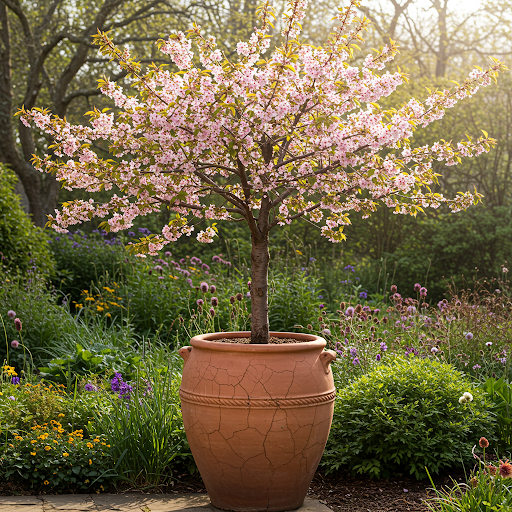
cherry
For more detailed botanical information and to explore the diverse world of Prunus (cherries), you can visit the Wikipedia page on Cherry.
Important Note: Cherry fruits are a healthy and delicious treat, rich in vitamins, antioxidants, and fiber. Growing your own cherries, even in pots, can bring the satisfaction of harvesting fresh fruit from your own tree and enjoying the beauty of these ornamental and productive trees in your outdoor spaces. With careful planning and attention to their specific needs, you can experience the rewarding experience of growing cherries in containers.
11THD
By greenship|2024-08-13T02:52:20+00:00August 13, 2024|Categories: Hand-carving Series|
HS
By greenship|2024-08-13T06:45:17+00:00August 13, 2024|Categories: Hand-carving Series|
KC2-11V
By greenship|2024-08-16T05:39:50+00:00August 16, 2024|Categories: Hand-carving Series|
GreenShip 27inch Tall Planters for Porch, Large Outdoor Planter Pots with Drainage Hole
By greenship-seo|2025-04-10T06:27:21+00:00April 7, 2025|Categories: Hand-carving Series|Tags: Decorative Flower Pots|
20VD
By greenship|2024-08-13T06:43:41+00:00August 13, 2024|Categories: Hand-carving Series|
Planter for Indoor Outdoor Plants, Set of 2 Modern Decorative Plant Pots with Drainage Hole, Decorative Flower Pots
By greenship-seo|2025-04-10T07:46:01+00:00January 9, 2025|Categories: Hand-carving Series|Tags: Decorative Flower Pots, Self-Watering Pots|

